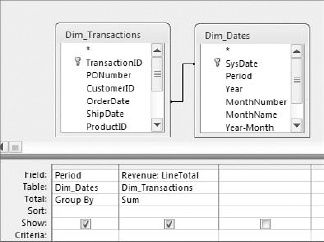Appendix B. Understanding and Using SQL
SQL (Structured Query Language), commonly pronounced "sequel," is the language relational database management systems such as Access use to perform their various tasks. To tell Access to perform any kind of query, you must convey your instructions in SQL. Don't panic; the truth is that you have already been building and using SQL statements without knowing it.
Here, you will discover the role that SQL plays in your dealings with Access and learn how to understand the SQL statements generated when building queries. You will also explore some of the advanced actions you can take with SQL statements, allowing you to accomplish actions that go beyond the Access user interface. The basics you learn here will lay the foundation for your ability to perform the advanced techniques you will encounter throughout thisbook.
Understanding Basic SQL
A major reason your exposure to SQL is limited is that Access is more user-friendly than most people give it credit for being. The fact is that Access performs a majority of its actions in user-friendly environments that hide the real grunt work that goes on behind the scenes.
For a demonstration of this, follow these steps:
In Design view, build the query you see in Figure B-1. In this relatively simple query, you are asking for the sum of revenue by period.

Figure B.1. Build this relatively simple query in Design ...
Get The Excel® Analyst's Guide to Access® now with the O’Reilly learning platform.
O’Reilly members experience books, live events, courses curated by job role, and more from O’Reilly and nearly 200 top publishers.

